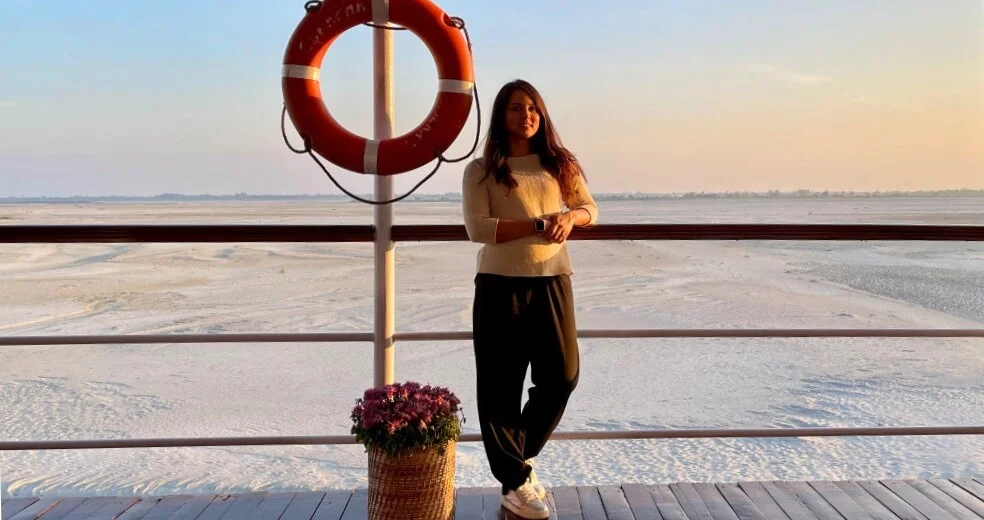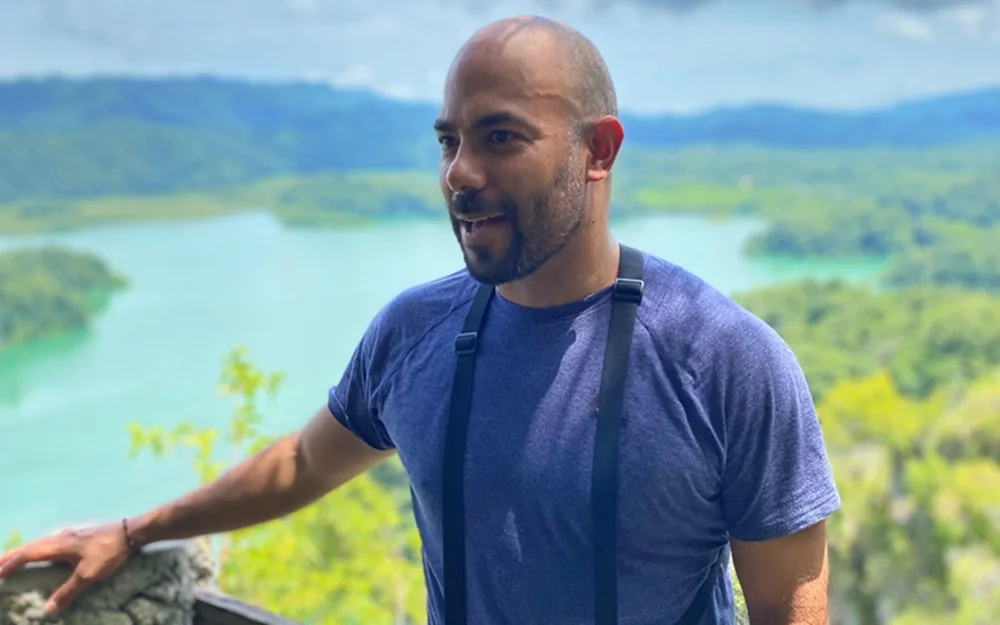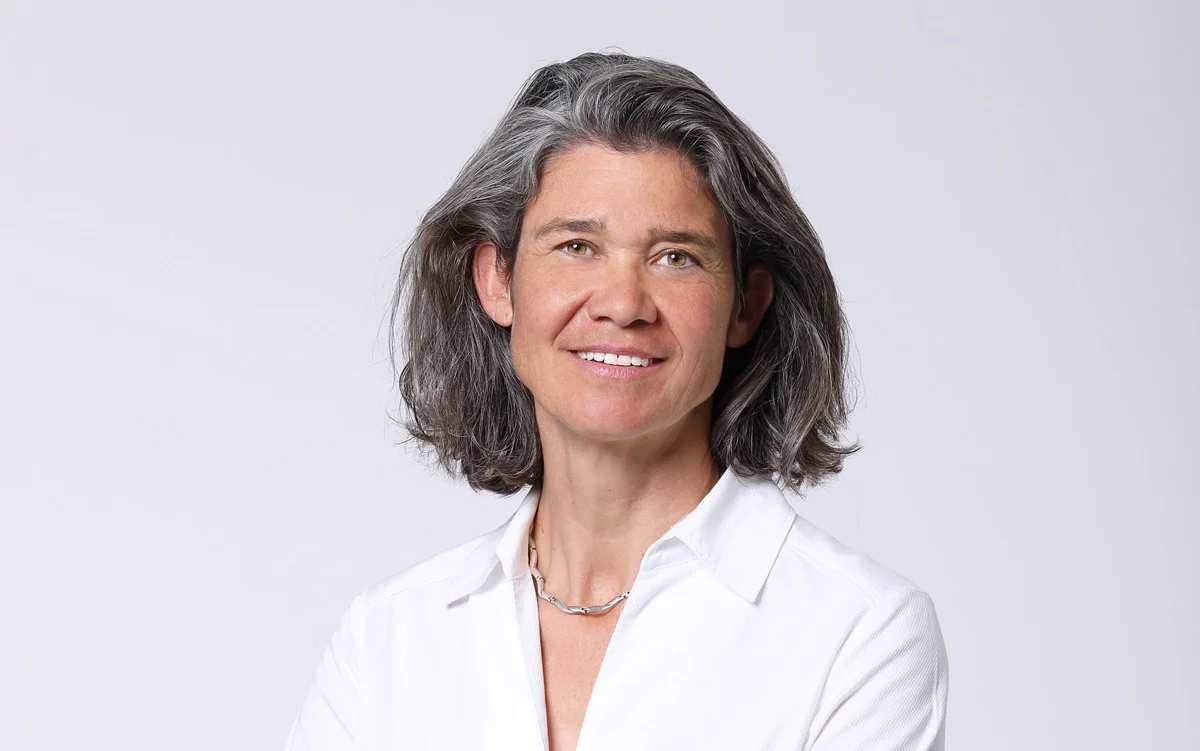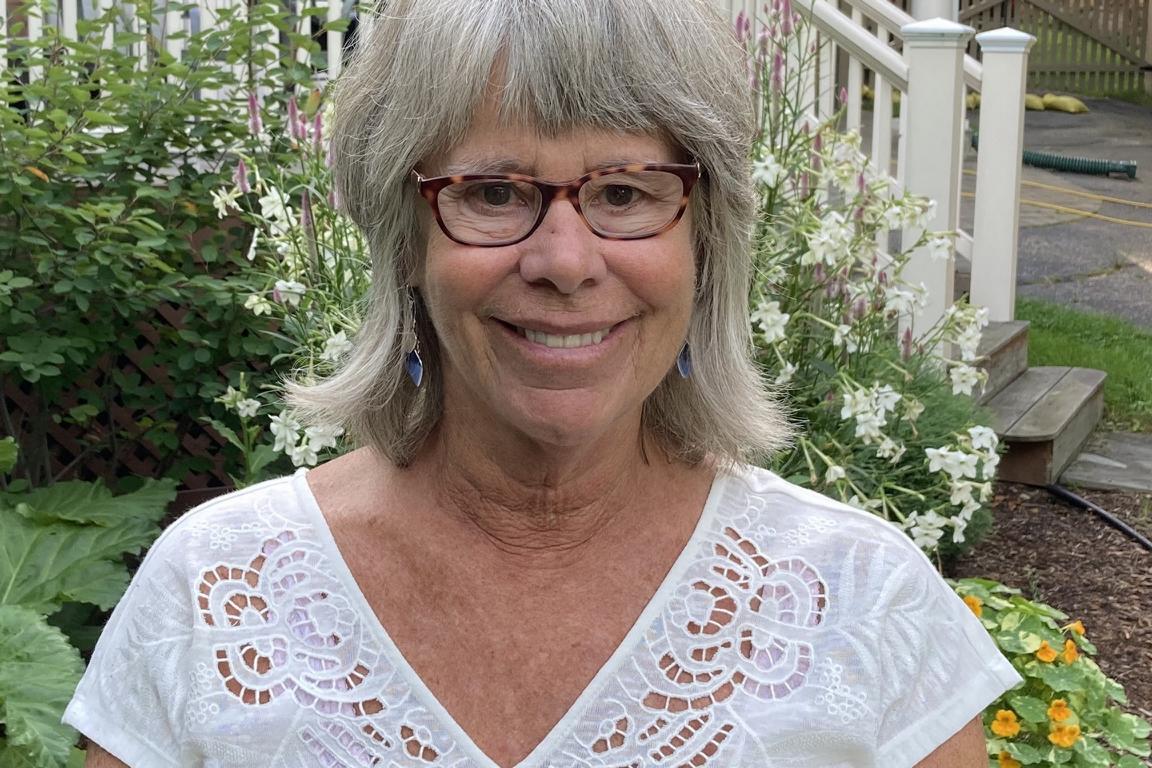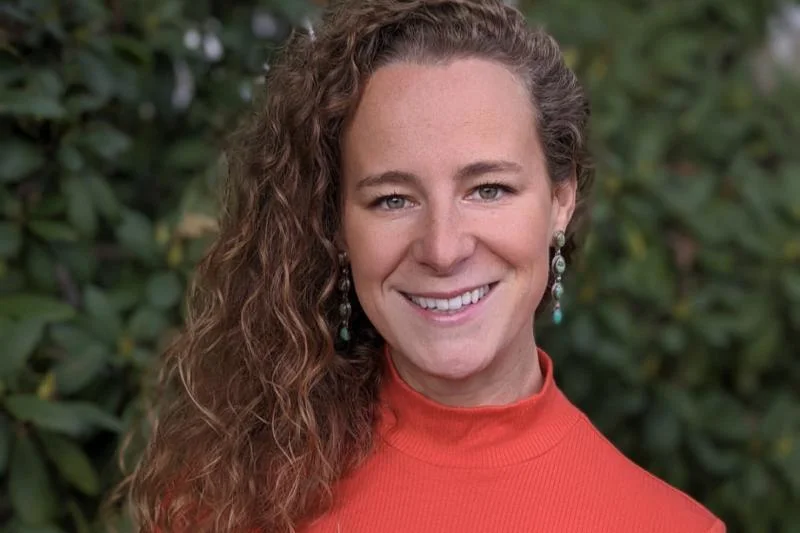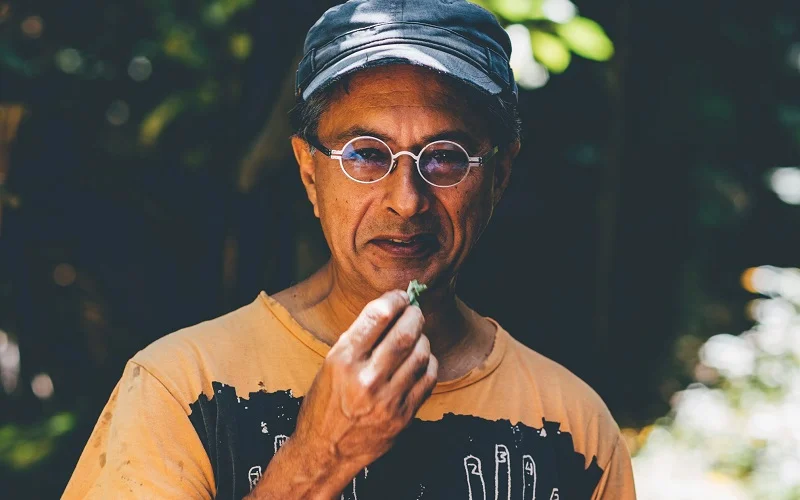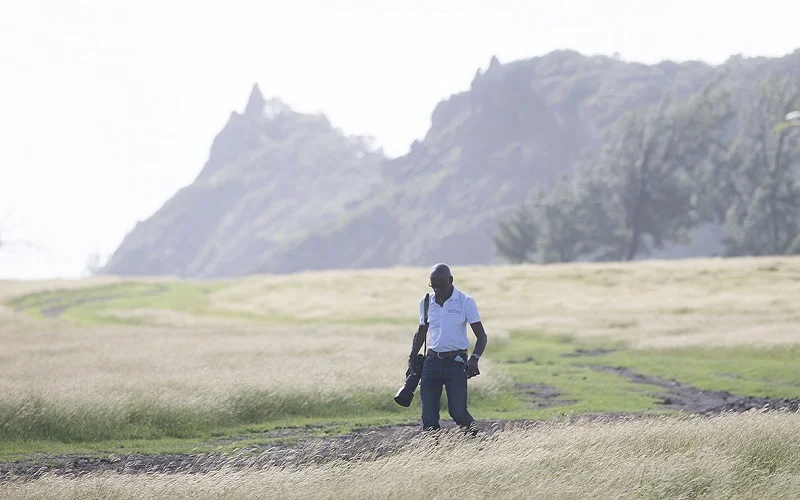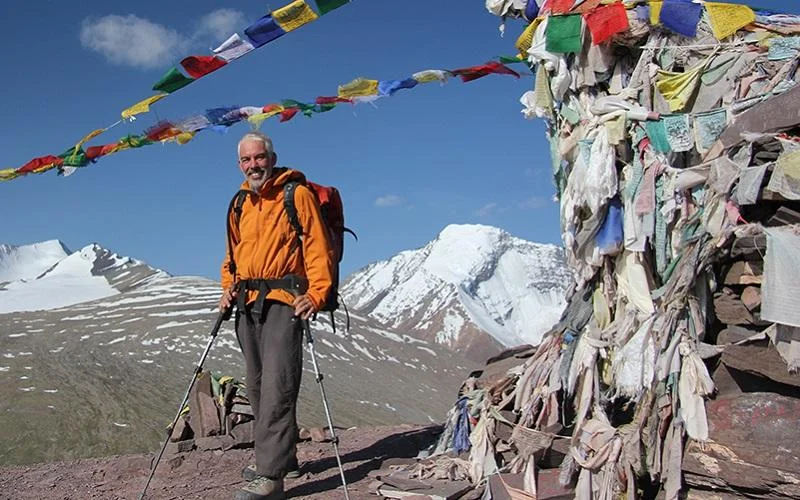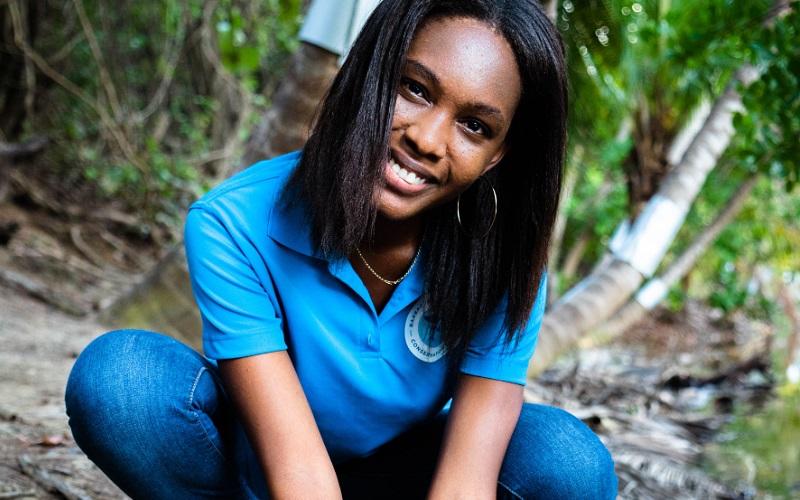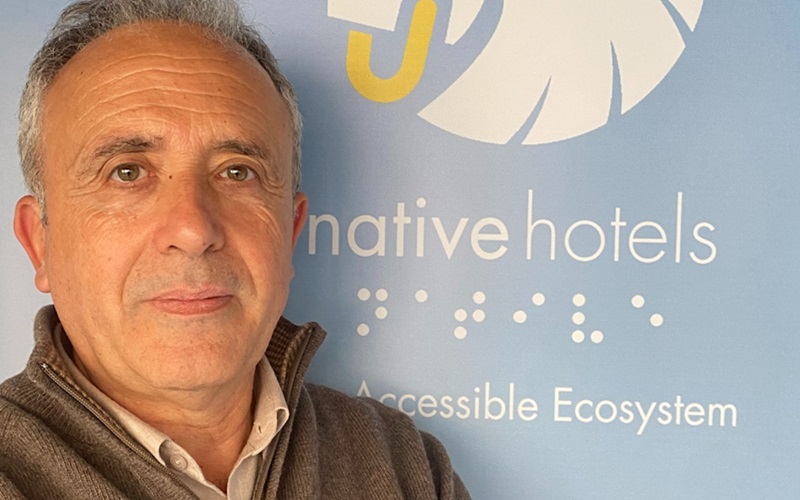
Meet Pablo Ramón, journalist, sociologist, and the visionary founder of NATIVE Hotels & Accessible Tourism. Since 2010, NATIVE has been at the forefront of integrating accessibility information into its hotel platform, catering to various user disabilities and utilizing the hyper-accessible web code of the InSuit system.
Celebrated internationally for its innovative approach, NATIVE is set to launch a new website in 2024 that supports conventional navigation as well as alternative methods like blowing, emitting sounds, or pressing multiple keys for users with conditions such as Parkinson’s.
Pablo, could you tell us what makes you passionate about making travel accessible to all and how you have made a difference in this area?
I am a journalist obsessed with quality in information. The day I found out that blind people can surf the Internet, being in charge of communication for a hotel club… I decided that I could no longer tell things to everyone but not to some. And within 48 hours I paid the equivalent of my salary for a year to the technicians of the Spanish National Organization for the Blind (ONCE) to create a website accessible to all in which to recommend nice hotels but taking into account their accessibility. That was in 2010. I left my job and founded NATIVE Hotels & Accessible Tourism, since then a non-profit organization.
I guess the first difference between NATIVE and other subsequent initiatives was that we started the chain of accessible tourism from the beginning, with the information on the website. In 2012 we decided to move to a new accessible web technology, the revolutionary tool InSuit. With it you can use our website in conventional mode but also by blowing, emitting sounds, or tapping more than one key on the keyboard if you have Parkinson’s. And that’s not magic, it’s technology. And it’s there to be used. Let’s not forget that with the Charter of Human Rights in hand, a non-accessible website is immoral and illegal. I hope we all don’t have to be blind to defend it.
You often talk about the progress of accessibility in tourist destinations, hotels, and activities over the last 14 years. Could you share with us some thoughts on the current state of accessible tourism and the challenges that still need to be addressed?
In accessibility, almost everything remains to be done. Because those who are supposed to provide services are often satisfied with the bare minimum. A 50-room hotel with only one accessible room with a wheelchair-accessible bathroom. And that’s the end of it. That’s the ugly standard portrait of the standard “accessible hotel”. Ramp at the main entrance, lift, and adapted bathroom in one room. But… can the customer in a wheelchair see himself/herself in the mirror from the wheelchair when shaving or making-up? Is there no cabinet under the sink, so that I can fit my wheelchair? Can I reach the tap from the wheelchair? These questions make many hotel and restaurant owners very nervous, as they realize that they have not done it correctly.
And… how many hotels allow a blind guest to distinguish the bottles in the mini-bar? Am I taking juice or milkshake? How do I find a socket to charge my mobile phone, do I start feeling all the walls? Does hot water come out of the left or the right? Do I really have to try the 4 positions of my magnetic key to get the door open?
And… how many hotels allow a deaf guest to get up at the same time as the others in case of a fire alarm at 4 o’clock at night?
There are cheap solutions for all of these, but few hoteliers implement them. However, none of them forget to buy the exact number of fire extinguishers per square meter. Because if the inspection of the Ministry of Industry arrives and they detect that you should have 8 and you have only bought 6, you will receive an impressive fine.
Unfortunately, without fines, accessibility will remain a secondary requirement.

Accessibility starts with accessible information, especially through websites. To what extent is it crucial for companies in the tourism sector to have fully accessible websites? How can they cater for people with disabilities, such as blind customers or those with Parkinson’s?
Well, we do not forget that the blind customer pays the same as me. But apart from that, as the head of a Northern European hotel chain with a strong focus on accessibility said, “Why are we so accessible? Because it’s business!!”. And customer information is the first step in this chain, we are at home with the computer and it is time to choose the destination and the hotel where we are going to stay on the Internet. If twenty hotels are mute for me on the Internet and one tells me about it in accessible web code… I can already imagine which can be the hotel where I am going to be most comfortable.
The hyper-accessible web tool InSuit has been collaborating with NATIVE since its inception. Today on the NATIVE website you can navigate in the conventional way, but you can also choose navigation by blows, sounds, or pressing several keys. And you can pay by credit card using the same mechanisms.
We gave a demo at the UNWTO headquarters in Madrid to the Ethics team in 2018. Marina Diotallevi and her colleague from the department were deeply shocked to see the tool’s chief engineer perform on the web with a combination of all possible limitations. Twenty seconds he was blind, then he had no hands, he had acute Parkinson’s, he had arthrosis in his fingers, he had everything at once… and he browsed, chose country, region, and hotel and sent a message to Reception by blowing into the microphone. “I want this for the UNWTO website”, Diotallevi said instantly.
Do you think tourism professionals see disability, ageing and accessibility as a viable business opportunity? How can accessibility benefit both the industry and travellers with special needs?
Little by little hoteliers and restaurant owners are realizing that there are a lot of older people doing tourism. But at the same time, when you talk about accessibility with many of these entrepreneurs, you perceive that they think that it is up to the State to provide solutions to disability citizens. In short, they interpret spending on accessibility as a kind of charity, a voluntary service.
One day in France, when I explained to a hotelier what we were providing for €300 a year, he looked at me seriously and said “Even if you told me that everything you have explained to me costs €1, I would say No”. And another one, from a town near Lourdes and with 5 modern rooms adapted for wheelchairs, grabbed my arm ten seconds after I had started to explain and added: “But, sir…. what is a paralytic going to do in my city?” (sic). I would have liked to answer him that if he didn’t know, offering 5 adapted rooms…
In 2015, a report by the European Commission with the ENAT (European Network for Accessible Tourism), the University of Surrey and the consultancy firm KPMG with thousands of data from accessible tourism users in 15 countries estimated the difference in bills generated by customers who choose the hotel for accessibility at between 30 and more than 60%. Even explaining the reason for this generous increase in profit is not easy to convince a hotelier in any country in the world that it is in his/her best interest to have more accessible facilities and services.
Why is there such a visible difference in the billings of customers with reduced mobility? Among other things, because they travel more accompanied than alone, often with family or friends who have chosen that hotel because of the room that allows a comfortable stay for that member of the group. And they are also customers who often make more use of the facilities, and if they are exhausted after a morning walking or touring a city in a wheelchair, they take their snack and dinner at the hotel. And they are more frequent users of the spa, massages and other wellness services.
When it comes to accessibility, do you think it is mostly about investing in specific gadgets and features, or are there low-cost or free solutions that companies should consider to make their facilities and services more accessible?
Improving physical accessibility has a lot to do with common sense – don’t put a flower pot in a corridor, avoid steps if we can have a gentle ramp which is preferred by all customers without exception especially when moving with suitcases – and then there are the gadgets, especially important.
A wireless device that connects the reception and its eventual warnings or alarms with the deaf client by means of a receiver that vibrates and emits a powerful light costs about 250 euros. We had a great project with Hearing Software for a wristwatch with vibration and alert messaging that would cost about 220 euros. But in the final phase there was not enough budget to finish a first production run. The Signage and Embossed Pack we designed with Puntodis in Spain have been distributed to all our hotels, it costs 50 euros, and allows a more comfortable stay for a customer with blindness or low vision.
There are many more examples of cheap and effective solutions. If someone wants to know more, please do not hesitate to contact us.
Are there any destinations or regions that stand out for their exemplary efforts to promote accessibility for all travellers? Can you share some of your favorite countries, regions or cities that have embraced accessible tourism?
Several countries have made a stronger commitment to accessibility than others. But probably the commitment is more visible in specific cities, or regions. And also public service companies, such as metro stations in some large cities, which have provided lifts, ramps and tactile floors for the movement of blind people. Also airports and their services to help elderly or disabled people while using the facilities. In general, the collective awareness of disability and accessibility has improved a lot in the last twenty years. But public space is immense, and in general, inhospitable for those who require specific support to move around in it.

Could you tell us about your short-term projects and objectives in the field of accessible tourism?
Actually, we are working on our new hyper-accessible website with the latest version of the InSuit system, which again allows you to navigate also by blowing, by sounds or pressing various keys if you have Parkinson’s or arthrosis, for example. And to this we will add a surprise for a few specific users, if the technology allows us to do so. We started the design of a new wheelchair to ride a dromedary for desert trekking -with industrial engineers of a university-, and also with Puntodis we are reediting the Braille and Relief Signage Pack for hotels with new items.
But being a non-profit organisation complicates our work a lot, so we also offer our efforts to committed companies that want to join us on this journey, in favour of their Corporate Social Responsibility. And in all the projects we collaborate with niche specialists such as the aforementioned Puntodis, with the AIS certifier, with safety-accessibility technicians such as Implaser, experts in adapted sports and industrial engineers from universities in Switzerland and Spain.
To put an end to my comments I would like to make a reflection. Defending the right to accessibility is like defending the rights of women or the rights of people of any race. Until men join protests alongside women, and until white citizens demonstrate alongside black citizens… their aspirations have no real success. In the world of accessibility and disability there is still an overwhelming absence of advocates for their rights who are not affected by that disability and that need for accessibility. I was not personally aware of disability until I heard a blind girl from Madrid on a radio programme in 2010. She even made jokes about her disability as she recounted her terrible day-to-day life walking around the big city. Her testimony had a profound impact on me, and led me to a personal commitment to combat an unjust situation.
Such a personal commitment would be desirable in every establishment that receives the public. It is not nice to think that a hotelier cannot accommodate his grandmother, his deaf cousin, his pregnant wife, his allergic child or his blind friend without his stay ending badly. Hotel management is an art of hospitality. To everyone.
Do you know what happened in the neighboring town of Lourdes when a year later I told a local journalist about the dramatic phrase of the manager and his 5 adapted rooms? He said to me: “Well, come back and visit them, they have changed the director and the current one has married a girl in a wheelchair”. I insist, let’s not wait to be personally affected by the need for accessibility, and let’s act. Hotels have to receive well everyone.
Thank you, Pablo.
Connect with Pablo on LinkedIn and visit NativeHotels.org.
Pablo has been peer-nominated for inclusion in our series of interviews with sustainable tourism impact makers. Meet them all here.
Enjoyed our interview with Pablo Ramón about making travel accessible for everyone? Thanks for sharing!

